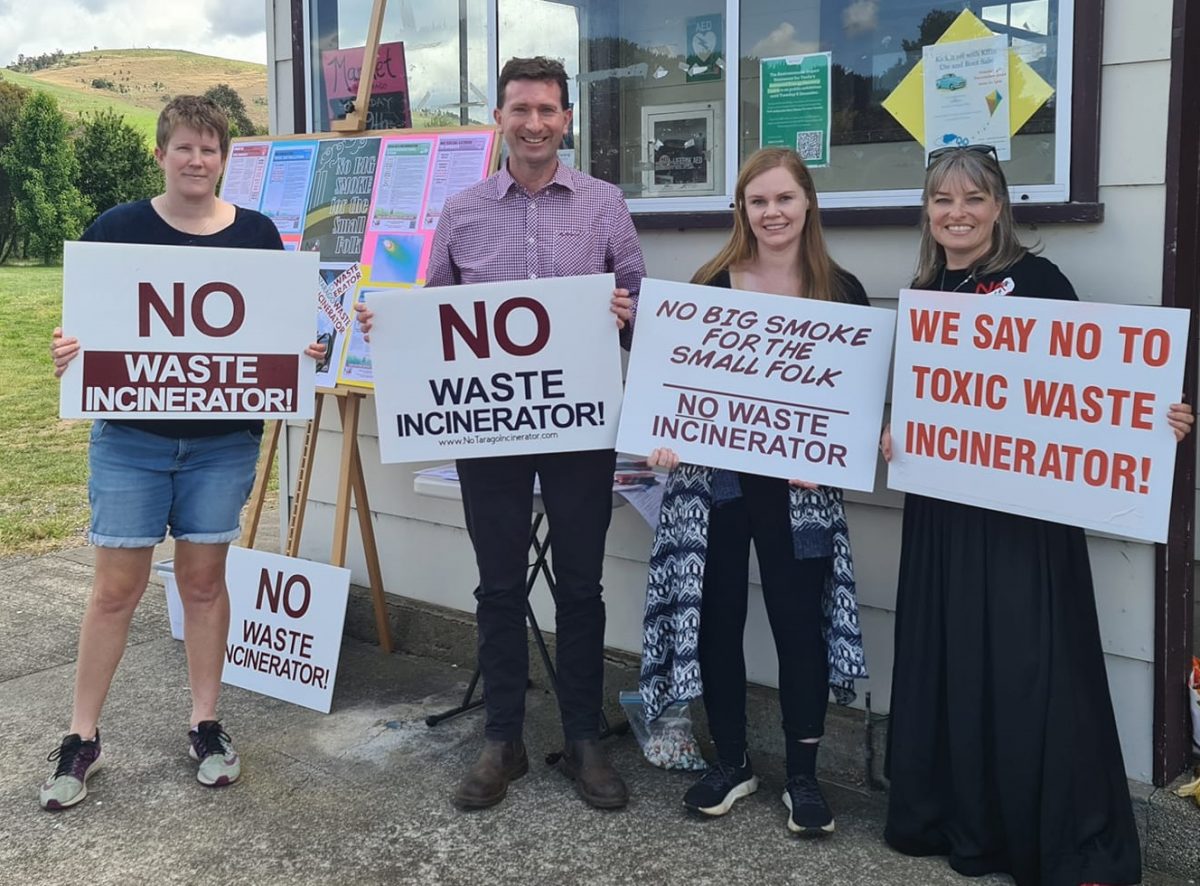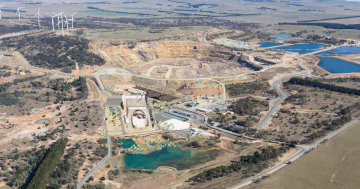
There has been ongoing community opposition to the proposed Energy from Waste facility at the Veolia Woodlawn site near Tarago. Photo: Communities Against the Tarago Incinerator Inc Facebook.
Goulburn Mulwaree Council has made official its “total opposition” to the Veolia Woodlawn Advanced Energy Recovery Centre at Tarago, identifying 53 individual issues in the project’s Environmental Impact Statement (EIS).
The proposed centre, which would be at 619 Collector Road in Tarago, would process up to 380,000 tonnes of waste a year from Sydney and other areas outside of the Goulburn Mulwaree region.
It has been met with fierce opposition in the community.
At an extraordinary meeting on the issue, several locals took the chance to express their concerns.
Paige Davis said she felt the proposal undermined the “human rights” of Tarago residents, such as the right to clean water and a healthy environment.
“These are being undermined to preserve the rights of the people of Sydney,” she said.
“Apparently, the risk to human health is too high for the communities of Sydney, so the NSW Government has pushed this on to our community.”
Concerns were particularly raised over potential health risks, and lack of “baseline” measurements of the air, water and soil to monitor whether any changes occur should the project go ahead.
Representing the ministers, pastors and priests of the region, the Venerable Paul Davey said the project brought an “unacceptably high risk” of harm to the health of locals, and he voiced concerns about potential chemicals that could later be discovered to be toxic.
“It would be sad to find a PFAS-style disaster in our council area,” he said.
The proposal has been put forward under a State Significant Development classification by the NSW Government, flagging it as a project considered to be of economic, social or environmental importance to the state.
But Mr Davey claimed it also served another purpose.
“The effect of State Significant Development legislation is to silence the local community, that’s its purpose,” he said.
Mr Davey accused Veolia of not carrying out appropriate community consultation, and pushed councillors to consider a plebiscite on the issue at the next election to ask the question of the wider region.
“A plebiscite will give the local community a voice … give the people a vote,” he said.
Dr Jackie Wright conducted the human health risk assessment for the EIS.
She defended the decision not to take baseline measurements, stating current levels of any toxins present were too low to detect.
“We used conservative assumptions, we assumed all the emissions [in the modelling] from the facility over 70 years, continuously … that’s my starting point for concentrations that might be in the soil,” Dr Wright said.
“If we collect baseline data, there needs to be a lot of data collected to understand what that variability is.”
Dr Wright argued she would be “happy” for herself and her children to live beside such a facility, and that any potential exposure to chemicals or toxins released from the facility would not cause any harm to people’s health.
“While you think zero [concentration] is better than some, technically from a health perspective it doesn’t make any difference,” she said.
“You can have some level of exposure, by which there will be no health effects … it’s important to understand those chemicals do have a threshold.”
Veolia CEO Richard Kirkman argued what was being proposed would be safe for the community, and said he was “saddened” by the frustration and concern in the community.
“I believe it’s the right thing to do and I believe we have proven it’s safe,” he said.
“Given the problems the planet has, this is for the common good of all mankind.”
He acknowledged there had been “operational disturbances” due to the current facility, mainly in the form of odour complaints, and said while they were working on improving such issues, he couldn’t make a “cast-iron agreement” that odour wouldn’t continue to be a problem.
“It’s not OK that we’ve had odour, we have to fix that, and part of that fix is to update the technology,” Mr Kirkman said.
“What matters is, are you improving the environment? Are you causing harm? And I stand by the fact we are protecting both those things.”
Mr Kirkman said he would be happy to look into soil sampling at the site if that was what the community wanted.
The 3000-page EIS was examined by 15 council staff, who identified 53 issues that they felt warranted further information or consideration.
These included more information about odour management, details about the emissions monitoring system, how compliance at the site would be monitored and managed, specific details on air quality monitoring, a further traffic impact assessment, what would happen if neighbours’ bores were impacted, the results of the independent public health assessment, and a demonstration of how community support for the project had been obtained.
The report also outlined various courses of action for the council to take in the “unlikely event” it was granted the chance to negotiate “benefits for the region” – particularly for the Tarago and Lake Bathurst communities.
“This includes advocating that once again, in the unlikely event this project is approved, that this be the only Energy from Waste Facility within the Goulburn Mulwaree region, and that the total volume of waste throughput be limited to 380,000 tonnes per annum,” the council statement said.
“It is reinforced that this is not Council’s preferred position, noting Council’s total opposition to Energy from Waste Facilities in the Goulburn Mulwaree Local Government Area.”
Councillor Bob Kirk said this was important to include as they had to “cover the possibility” the project would still go ahead without the council’s approval or permission.
“We have to face the reality that we’re making a submission … and despite our best presentations and the like, it is a possibility that this could be approved,” he said.
“If it’s approved, we don’t get another chance at protecting [against] the sorts of issues that have been identified.”









